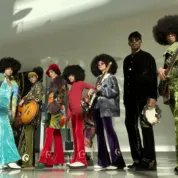
Now here's a little story I've got to tell...
About three bad brothers that formed a band in 1981, and broke the mold of music history. Originating as a punk band of young kids in New York City, they were daring and edgy, and became captivated by a new underground music scene that was emerging in NYC. The music was called hip-hop, and was gaining popularity across block parties and nightclubs throughout the South Bronx. The 3 kids quickly began experimenting with the new sound, with an early track "Cookie Puss" getting played by DJs in nightclubs. This buzz eventually caught the attention of a music producer named Rick Rubin, who signed them to Def Jam record label with Russell Simmons, launching them into the public eye alongside hip-hop heavyweights Run DMC, LL Cool J and Public Enemy.
The Beastie Boys fundamentally altered the landscape of hip-hop. They utilized their punk rock roots to pioneer new approaches in the genre, and taking sampling techniques to groundbreaking new levels. By the 1990s, they were pushing the boundaries of the entire music industry, fusing hip-hop with live instruments and cross-genre blending, challenging the conventional definitions of multiple genres.
Their journey from punk rock kids to hip-hop stardom serves as a testament to their relentless creativity and enduring influence. Below is a list of the 10 Beastie Boys albums responsible for that impact. We've ranked them in order of how much influence they had, including not just the chart-toppers but compilations and rereleases as well, to provide a thorough account of the entire Beastie Boys saga.
Paul's Boutique (1989)
Paul's Boutique stands as a paradox among the Beastie Boys albums. Released in 1989, the album initially faced poor sales and struggled to resonate with audiences accustomed to the band's earlier work. Despite this tepid reception, the album had a monumental impact on the hip-hop industry, and redefined its recording practices to this day. The Rock N Roll Hall of Fame said the album is "considered the pinnacle of hip-hop’s golden era of sampling, and is still viewed as one of the finest rap albums ever made!"


Before Paul's Boutique the technical limitations of the two-turntable setup used by DJs confined hip-hop music to simple compositions: a break beat on one turntable and a single sample overlaid on the second turntable. But with the help of the Dust Brothers, Paul's Boutique revolutionized this sampling technique. They introduced multi-layered sampling as a new industry standard, taking the primitive hip-hop sound of the 1980s and elevating to new levels of complexity and maturity. With anywhere from 100 to 300 samples meticulously woven into its fabric, Paul's Boutique was a tapestry of sounds ranging from funk, soul, rock, jazz, and more. This intricate sampling became the bedrock for hip-hop production techniques in the years that followed.
Comprised of 13 or more samples, the album's first track "Shake Your Rump" is a prototypical example of this multi-layered sampling technique...
Though initially overlooked, Paul's Boutique has been reappraised as a masterpiece, with tracks like "Shake Your Rump" and "Hey Ladies" gaining cult status. Its influence is especially evident in subsequent works by artists who came to view sampling as an art form, rather than a mere technique. It is now cited as one of the most innovative Beastie Boys albums in the history of hip-hop, a testament to its lasting impact on the genre.
Check Your Head (1992)
After the monumental success of License to Ill the poor sales performance of the band's second album Paul's Boutique led many to question the band's staying power in the music industry. But in 1992 Check Your Head quieted those doubters and reignited their career, not by reverting back to styles in the initial Beastie Boys albums, but by evolving it substantially. The album was highly experimental, taking bold steps in both production techniques and musical composition.
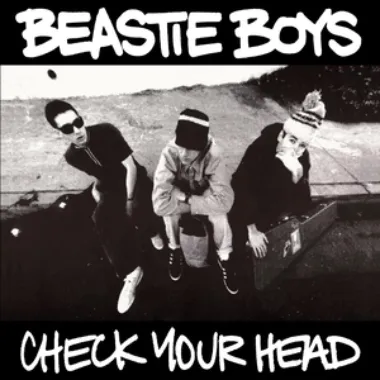
The Beastie Boys decided to record much of the album in their own studio, known as G-Son Studios, where they could escape criticism and negativity and enjoy more creative freedom. This DIY approach allowed them to experiment to a degree that would have been impossible in a conventional studio. For instance, the use of live instruments was revolutionary at the time. Other hip-hop acts relied primarily on drum machines and multi-layered samples, a technique the Beastie Boys had just pioneered on their prior album. The band took another innovative step forward, blending live drums, guitar, and organ into their tracks. They switched between traditional hip-hop elements and live instruments within the same track, heavily pushing the boundaries of genre-blending.
Another hallmark of this album was its reintroduction of punk rock, harking back to their roots. It wasn't just a nod to their early years; it was a reimagination of how punk could coexist with hip-hop. This fusion caught the attention of the music industry and paved the way for rock-rap genres that bands like 311, Rage Against the Machine, and Linkin Park would later adopt as their core style.
The album's diverse range of sounds and styles acted as a bridge for fans of alternative rock, punk, and even jazz to venture into hip-hop, opening it up to audiences that had previously been skeptical or dismissive of the genre. It was a game-changer, featuring daring experimentation and a fusion of live instruments with traditional hip-hop. This Beastie Boys album put the band back on the map and redefined the limits of the hip-hop genre for a THIRD time—the second being on the aforementioned Paul's Boutique album, and the first on the album we'll mention next!
Licensed to Ill (1986)
License to Ill wasn't just the Beastie Boys' debut album; it was a watershed moment for hip-hop itself. Before the album's release in 1986, hip-hop was predominantly an underground New York City sound. This record played a critical role in elevating the genre to a national, and even international, audience. It was among the first hip-hop albums to achieve national success, serving as a gateway for many who had never listened to the genre before.
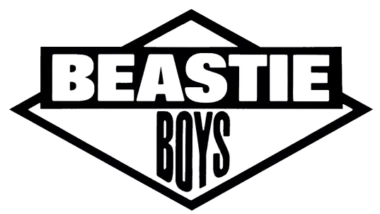
Musically, the Beastie Boys drew heavily on their punk roots, utilizing heavy guitar samples over bold breakbeats. Their lyrical style was equally unique— alternating rhymes while blending humor and social commentary, unlike any rap act before them
License to Ill was a juggernaut, receiving critical acclaim and commercial success, and has been certified Diamond by the RIAA, signifying over 10 million copies sold. In 1987 it became the first rap LP to reach #1 on the Billboard 200, and it did this while hip-hop was still in its infancy. Because of its foundational impact, you could argue it should be higher on this list. But there were plenty of hip-hop artists biting at Beastie Boys' heels in the 1980s. Hip-hop would have topped the charts with or without License to Ill. And for this reason we've put Paul's Boutique and Check Your Head ahead of it, due to their more distinctive accomplishments.
Nevertheless, it was still a groundbreaking album, showing the world that this new genre could achieve blockbuster success and sales. As a testimony, hip-hop greats such as the Roots and Lil Wayne have covered hits like Paul Revere, Chuck D and LL Cool J inducted them into the Rock N Roll Hall of Fame, and others like Eminem and Macklemore have cited License to Ill as a major influence. Ongoing reverence from artists across generations underscores the album's role in shaping the genre and its long-lasting influence.
Hello Nasty (1998)
The Beastie Boys released Hello Nasty at the peak of their career in 1998. This album was once again an exploration of creativity, showcasing the Beastie Boys' musical versatility to its fullest extent yet. From the electronica-infused hit "Intergalactic" to the laid-back, jazzy groove of "I Don't Know," the album refused to be pigeonholed.
While it didn't reshape the music industry in ways similar to their earlier albums, it did mix things up by introducing Mix Master Mike to their lineup, a DMC World Championship DJ. Mix Master Mike added a new layer of complexity to the Beastie Boys' sound, bringing the edgy tactics of their youth back to life. His audacious scratching techniques were pivotal in shaping the album's texture, which was showcased in the band's official video "Three MC's and One DJ"...
Hello Nasty was a major commercial success, going triple platinum, receiving notable awards including two Grammys, and debuting at number one on the Billboard 200. It's arguably their most mature album, utilizing the experimentation and genre blending they'd become known for — from rap to rock to electronica — to create an award-winning album that reflected the 15 years of experience and professionalism they had developed.
Ill Communication (1994)
Ill Communication released in 1994, was another major milestone in the Beastie Boys' journey. Following the experimental path paved by Check Your Head the album further solidified the Beastie Boys' unique position in the hip-hop universe. One of the standout features of this album was its socio-political commentary. Tracks like "Sure Shot" and "Sabotage" resonated with listeners, offering perspectives that were uncommon in hip-hop at the time.
Musically, Ill Communication featured a medley of genres, from hardcore punk to jazz, displaying the Beastie Boys' growing mastery over musical diversity. They continued to integrate live instruments, but also expanded their sonic palette by delving into genres like Tibetan Buddhist chants with the song "Bodhisattva Vow." This proved that hip-hop could encompass global influences and spiritual themes, opening the door for future artists to experiment in similar ways.
The album was also an early advocate for Tibetan independence, giving a spotlight to a cause that wasn’t widely represented in mainstream media. This advocacy extended beyond music into real-world activism, showing how artists could leverage their platform for social change.
Ill Communication was not only commercially successful, reaching number one on the Billboard 200, but it was also critically acclaimed. The album's multi-layered approach to music-making and storytelling made it a cultural cornerstone that transcended conventional genre boundaries. It sustained the Beastie Boys' relevance and showcased their multidimensional creativity, marking yet another revolutionary moment in their career.
Some Old Bullshit (1994)
In 1994 the Beastie Boys went a different direction from the typical Beastie Boys albums, releasing Some Old Bullshit a compilation of the band's earlier work from 1982. What puts this rather customary compilation this high on or list, and above full-length LPs, is its inclusion of the track "Cooky Puss," a song largely responsible for the band's transition into hip-hop. The song was written as a joke about an ice cream cake character created by Carvel, but ended up gaining traction in New York's underground clubs, fueling the group's interest in the genre, and transitioning them from punk to hip-hop. Without it, the Beastie Boys may have never been.
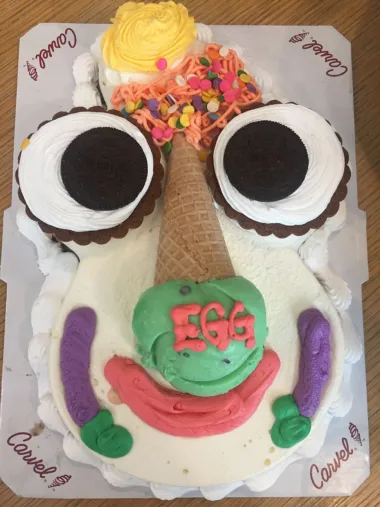
The rest of Some Old Bullshit serves as a time capsule that captures the raw energy of the Beastie Boys' initial punk phase. Songs like "Egg Raid on Mojo" and "Transit Cop" showcase their early punk sound, filled with aggressive tempos, distorted guitars, and shouting vocals. These tracks offer a stark contrast to their later, more polished hip-hop work but provide essential context for understanding their musical evolution.
While Some Old Bullshit may not be a commercial success, it remains an essential part of the Beastie Boys' story. It highlights their willingness to experiment and adapt, traits that would become hallmarks of their career, making them one of the most versatile bands in music history.
To the 5 Boroughs (2004)
To the 5 Boroughs released a decade after Ill Communication was a return to hip-hop's traditional form, so to speak. After several experimental Beastie Boys albums, this one was a homage to the underground New York hip-hop scene that birthed the Beastie Boys. While the album featured modern production techniques, it was a nod to the old-school rap that the group grew up on, and a love letter to New York City post-9/11.
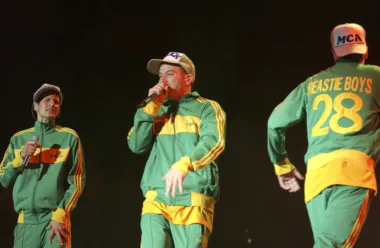
The album was politically charged, with lyrics tackling subjects like the Bush administration and the Iraq War. This was at a time when the hip-hop community was still grappling with how to approach such heavy topics, making To the 5 Boroughs an important cultural statement.
Both critically and commercially successful, To the 5 Boroughs was a mature, reflective work that showed the Beastie Boys were still relevant in the new millennium. It paid homage to their roots while pushing the envelope by incorporating contemporary issues and eco-consciousness into the hip-hop discourse.
Hot Sauce Committee Part Two (2011)
Hot Sauce Committee Part Two released in 2011, marked a defining moment for the Beastie Boys, becoming the final studio Beastie Boys albums due to the untimely passing of Adam "MCA" Yauch a year later in 2012. The album paid homage to the Beastie's experimental roots by using modern sound engineering techniques to blend digitally enhanced tracks with traditional analog recordings, showcasing their longstanding versatility as hip-hop innovators.
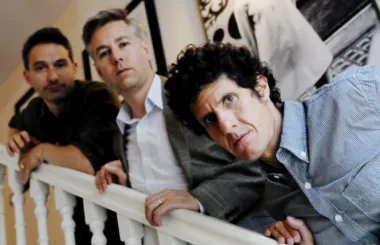
The album was accompanied by a short film directed by Adam Yauch, "Fight for Your Right Revisited," which garnered attention for its star-studded cast and its commentary on the band's own history and the broader musical landscape. This multi-media approach to the album’s release demonstrated their understanding of the changing dynamics of music consumption in the digital age.
The Beastie Boys Hot Sauce Committee Part Two made room for collaborations with artists like Santigold and Nas, while still offering us songs vibe like "Make Some Noise" and "Don't Play No Game That I Can't Win" with a classic Beastie Boys vibe. The album received widespread critical acclaim and was even nominated for a Grammy, reinforcing the Beastie Boys' ability to create impactful music even decades into their career.
Polly Wog Stew (1982)
Released in 1982, the Polly Wog Stew EP was the Beastie Boys' first recorded release, launched under the independent label Rat Cage. One of the standout tracks is "Egg Raid On Mojo," a song based on a real-life event where the band members took revenge on a bouncer who had earlier denied them entry to a club. They returned, dressed all in black, to pelt him with eggs. The band carried the ethos of this song into their later work, reincorporating some of its lyrics into the track "Egg Man" on Paul's Boutique which became one of the most influential hip-hop albums of all time.
The EP also received additional exposure when two tracks were included in the 1982 ROIR cassette compilation "New York Thrash," providing an early glimpse into New York's burgeoning punk and hardcore scene. Additionally, an alternate version of "Egg Raid On Mojo" from Tim Sommer's "Noise The Show" radio program is available on the Some Old Bullshit compilation, adding another layer to the song's enduring legacy. The album may not be the most commercially popular Beastie Boys album, but it's definitely a must-listen for anyone that wants to understand the full spectrum of the Beastie Boys' artistic journey.
The Mix-Up (2007)
The Mix-Up released in 2007, is a unique entry in the Beastie Boys' discography primarily because it is an instrumental album. As artists primarily known for their lyrical dynamism and vocal delivery, going instrumental was a risky but interesting move. It showcased their musical skills outside of rapping, bringing attention to their capabilities as instrumentalists. This album wasn't about pushing the boundaries of hip-hop or rock; it was more of a palette cleanser that demonstrated their versatility as musicians.

While the album received mixed reviews, it did win a Grammy for Best Pop Instrumental Album, confirming that their experiment was not in vain. The tracks, while devoid of lyrics, are rich in rhythm and melody, blending genres like funk, soul, and jazz into a cohesive package. The Beastie Boys proved that they could convey their characteristic energy and creativity without uttering a single word, a feat not many artists in their genre could accomplish.
It started way back in history, with Ad-Rock, MCA (and me) Mike D...
The Beastie Boys aren't just recorded in the annals of music history as hip-hop artists, they defined and redefined hip-hop history as innovators and trailblazers. Their consistent risk-taking and boundary-pushing rippled through multiple music scenes, influencing musicians and fans across multiple genres. If you haven't seen it yet, we highly recommend the Beastie Boys Story on Apple TV, or the Beastie Boy's Book on Amazon. It's a tale that any music fan will love, not just due to their musical prowess, but their relentless quest for artistic innovation that pushed the music industry to be greater, in so many ways.

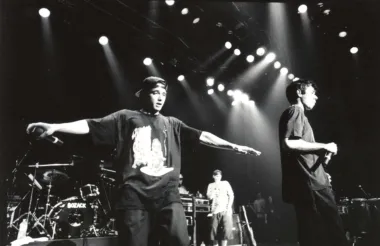


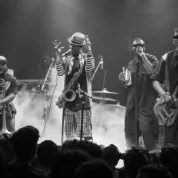
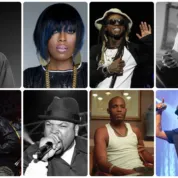

Leave a Reply!
Because you can't you won't and ya don't stop!
Another great list! I really wish you'd create playlists fo rthese on Spotify!